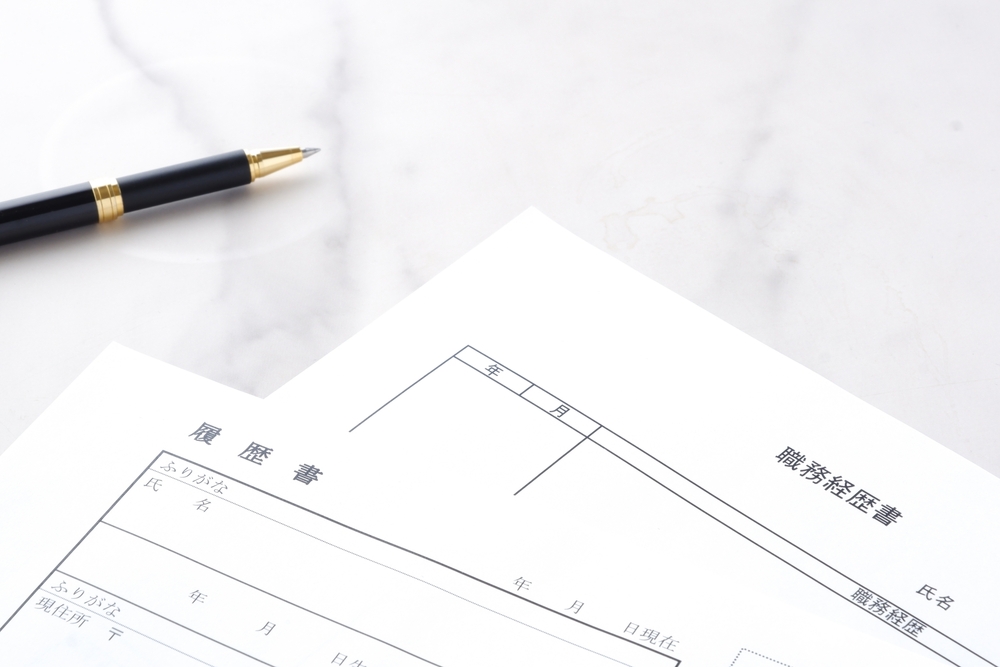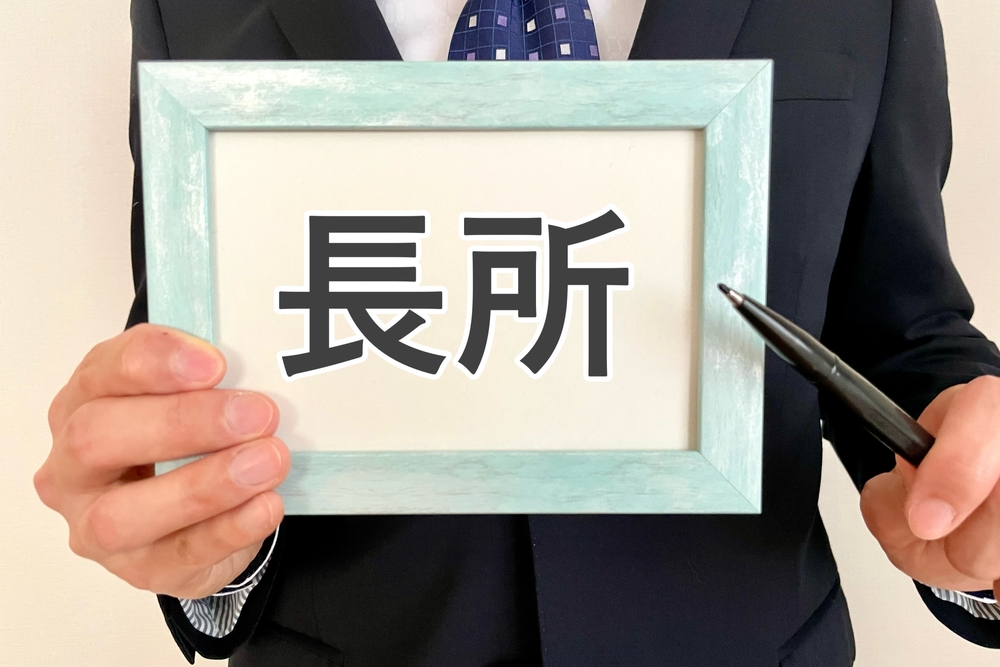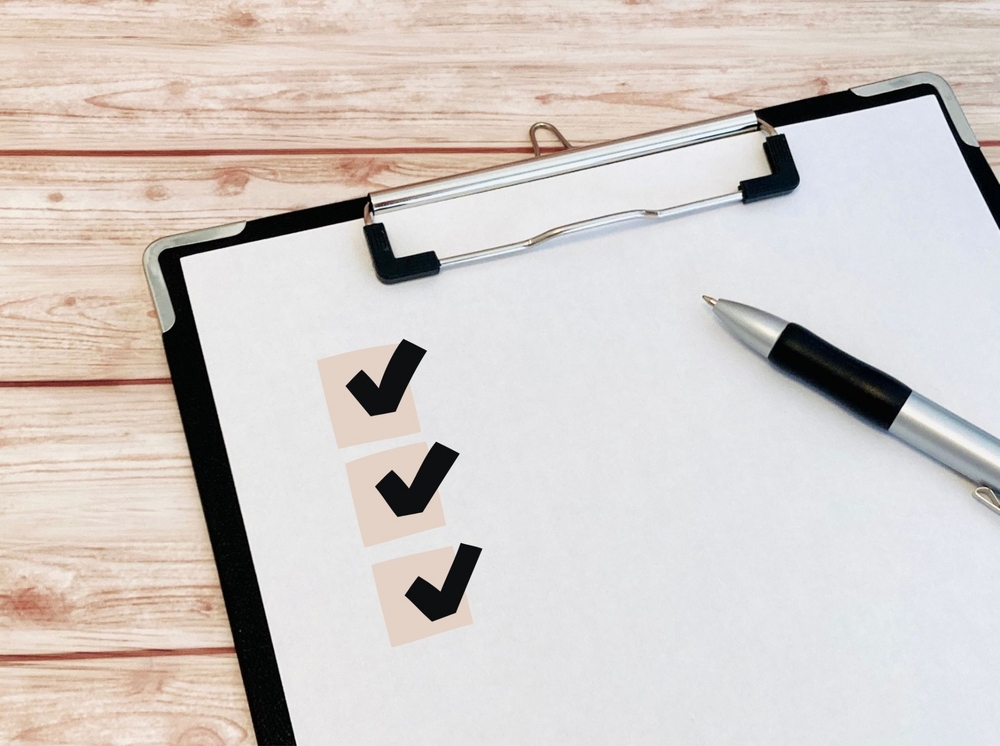転職活動では応募書類の作成時に自己PRを記載していきます。「自己PRにはどのようなことを書けばいいかわからない」「なぜ選考に落とされてしまうのか原因がわからない」などの悩みを抱えている方もいるでしょう。他人の強み・魅力を表現できても、自分に対しては強みも魅力もないと感じてしまう方もいるかもしれません。
そこで今回は、自己PRについて解説しつつ、事前に準備しておくべきことや作成手順をご紹介します。さらに、自己PRに使える例文も最後にご紹介しているので、気になる方はぜひ最後までご覧ください。

転職活動では応募書類の作成時に自己PRを記載していきます。「自己PRにはどのようなことを書けばいいかわからない」「なぜ選考に落とされてしまうのか原因がわからない」などの悩みを抱えている方もいるでしょう。他人の強み・魅力を表現できても、自分に対しては強みも魅力もないと感じてしまう方もいるかもしれません。
そこで今回は、自己PRについて解説しつつ、事前に準備しておくべきことや作成手順をご紹介します。さらに、自己PRに使える例文も最後にご紹介しているので、気になる方はぜひ最後までご覧ください。
When you are looking for a new job, you will write your self-promotion when you prepare your application. Some of you may have problems such as "I don't know what I should write in my PR," or "I don't know why I was not selected for the job. Some may feel that they can express the strengths and attractiveness of others, but have no strengths or attractiveness for themselves.
In this issue, we will explain self-promotion and introduce what you should prepare in advance and the procedure for creating it. In addition, we also introduce some example sentences that can be used for self-promotion at the end of this article, so if you are interested in this topic, please read to the end.

自己PRを作成する前に、まずは目的などを理解しておく必要があります。そもそも自己PRとは、企業に対して自分をアピールするために行うものです。
当たり前のことではありますが、強み・魅力がない人を採用しても企業側には何のメリットもありません。そのため、自己PRでアピールしていく必要があります。
自己PRは、自身の得意なことや実績などをもとに、採用する企業にとってどのようなメリットがあるかを伝えていくことがポイントです。目的や企業側が知りたいことを把握した上で、自己PR文を作成していきましょう。

Before creating a self-promotion, it is necessary to first understand its purpose. To begin with, the purpose of a self-promotion is to appeal oneself to a company.
Although it is obvious, there is no benefit to the company if it hires someone who does not have strengths and attractiveness. Therefore, it is necessary to appeal to them through self-public relations.
The key to self-promotion is to convey how you can benefit the company that is hiring you, based on your strengths and achievements. Create your personal PR statement with an understanding of your objectives and what the company wants to know about you.

自己PR文に似ているものとして、長所や自己紹介、志望動機などがあります。これらと自己PRの目的の違いがわからなくなってしまうと、どうしても似通った内容になってしまったり、うまく自分をアピールできなかったりするため注意が必要です。ここからは、自己PRとそれぞれの違いについて解説します。
長所も自分のよいところをアピールすることになるため、同じだと考えてしまう人もいるでしょう。しかし、自己PRと長所では視点が異なります。
自己PRは、企業側にとってメリットがあるようにアピールする必要があるため、PR文を作成する際は企業側の視点から自身を採用するメリットについて説明していくのが基本です。一方、長所は自分視点でどのような点に優れているのかを説明していきます。
たとえば、自分の性格や持っている気質、考え方などをアピールする場合は長所です。それに対し、応募先の企業で活かせるスキルや経験などを紹介する場合は自己PRになります。もし長所を自己PR文にも活用したい場合は、長所で説明した部分を業務でどのように活かせるかアピールすることが大切です。
自己PRと自己紹介も目的が異なります。自己PRは先ほどもご紹介したように、自分が持つ能力やスキルを業務にどのように活かせるかをアピールし、企業にとってメリットがあることを説明するのが目的です。しかし、自己紹介は自分自身の基本情報を説明するのが目的となります。
氏名や出身地、学歴、職歴、趣味など、個人に関する情報を相手に伝えるのが自己紹介です。また、面接で自己紹介をしてもらう目的には、端的にわかりやすく自身のことを伝えられるかも含まれており、コミュニケーション能力の評価にもつながります。
自己PRと志望動機も目的が異なります。志望動機は、「なぜこの会社で働きたいのか」「この会社に入って何がしたいのか」を説明するのが目的です。
採用担当者は、応募者の志望動機を見ることで「本当に入社したいと考えている」「この人なら一緒に働けるだろう」などと判断できます。つまり、どれだけ企業側にとってメリットのある人だったとしても、志望動機で本気度が伝わらなかったり会社の価値観や求めている社風と違うと判断されたりした場合、不採用となる可能性が高いです。
このように、自己PRと長所・自己紹介・志望動機にはそれぞれ違いがあります。いずれも書類作成や面接で重要な項目となるため、目的などの違いをきちんと理解した上で作成するようにしましょう。

Similar to the self-promotional statement, there are such things as strengths, self-introduction, and motivation for applying for a job. If you lose sight of the difference between these and the purpose of self-promotion, you will inevitably end up with similar content and will not be able to appeal yourself well, so care should be taken. Here, we will explain the difference between self-promotion and each.
Some people may think that strengths are the same as self-promotion, since strengths are also about appealing one's good points. However, the perspectives of self-promotion and strengths are different.
Self-PR should be presented in a way that is beneficial to the company, so when writing a PR statement, the basic idea is to explain the advantages of hiring you from the company's perspective. On the other hand, strengths are the points in which you excel from your own point of view.
For example, if you are appealing your personality, temperament, or way of thinking, this is a strong point. On the other hand, if you are introducing your skills and experience that can be utilized at the company you are applying for, this is your self-promotion. If you want to use your strengths in your personal statement, it is important to show how you can apply the skills and experience you have described in your strengths to your work.
Self-PR and self-introduction also have different purposes. As mentioned earlier, the purpose of self-promotion is to show how you can apply your abilities and skills to your work and explain how they will be beneficial to the company. However, the purpose of self-introduction is to explain basic information about yourself.
It is in self-introductions that you give the other person information about yourself, such as your name, hometown, education, work history, hobbies, and other information about you as an individual. The purpose of having a candidate introduce himself/herself at an interview also includes the ability to convey information about himself/herself in a straightforward and easy-to-understand manner, which leads to an evaluation of communication skills.
The purpose of self-promotion and motive for applying for a job also differ. The purpose of a personal statement is to explain "why I want to work for this company" and "what I want to do after joining this company.
By looking at the applicant's motive for applying, the hiring manager can determine that the applicant "really wants to join the company" and "this person will be able to work with me. In other words, no matter how beneficial a person is to the company, if the applicant's motivation does not convey his/her seriousness or if it is judged to be different from the company's values or the corporate culture it is seeking, there is a high possibility that he/she will not be hired.
Thus, there is a difference between self-promotion and strengths, self-introduction, and motive for applying for a job. Since each is an important item in the documentation and interview process, it is important to understand the differences in purpose before writing them.

いきなり自己PRを作成しようとしても、何を書けばよいかわからなくなってしまいます。そこで、自己PRの作成前にまずは準備から始めてみましょう。ここからは、自己PRを作成する前に行う事前準備の方法についてご紹介します。
まずは、自身の強みやスキルについて知っておくために、自己分析を行いましょう。自己分析は、自身の性格から価値観、傾向、強み・弱みなどを知るための手段です。自己分析を行うことで、企業にアピールできる強みやスキルを見つけやすくなります。
また、自己分析を行うことで、自身の価値観やどうなっていきたいのかが明確になり、キャリアを選択する際にも役立つでしょう。自分に合った企業を見つける際にも役立つため、企業探しを行う前に自己分析を実施してみてください。
自己分析にはさまざまな方法がありますが、過去に起きた出来事・取り組んできた内容を洗い出し、深堀する方法や、「ジョハリの窓」というフレームワークを活用した方法などがあります。いずれの方法も内容を掘り下げていくことで、自分のスキルや強み、価値観などを言語化することが可能です。
自己分析を行ったら、志望する企業の研究・分析も行いましょう。志望する企業がどういった事業を展開し、どのような能力・スキルを持った人を求めているのかを調べます。これらの情報を集めた上で、自己PRや志望動機に盛り込むことで、より効果的に自身をPRすることが可能です。
企業研究のやり方は、まず企業の基本情報を知ることから始まります。とくに、企業理念が自分の仕事に対する考え方と共感できた場合、快適に仕事ができる可能性が高いです。また、企業理念からどのような人材を求めているのかがわかる場合もあるため、把握しておきましょう。
次に、企業が手がける事業内容を調べていきます。事業内容は、ただ「どのような商品・サービスを提供しているか」を調べるのではなく、「誰に」「どうやって」提供しているかも調べることが大切です。ここまで調べ上げると、企業のビジネスモデルや仕組みがわかるようになり、仕事に対して具体的なイメージがつきやすくなります。
また、業界内での立ち位置や将来の展望についても把握することは大切です。将来の展望などは、新聞や情報サイトなどで掲載されている場合も多いですが、既存データから自分自身で想像することが重要となります。
自己PRを作成する前に、あらかじめ伝えたい内容をまとめておくとスムーズに作成しやすくなります。たとえば、アピールしたい強みが3つある場合、その強みごとに具体的なエピソードや実績をまとめておきましょう。そうすると、何を伝えたいのかが自分だけでなく、相手にも伝わりやすくなります。
このとき、見出しを作成しておけば書きたい内容も決まり、まとめやすくなるのでおすすめです。相手にとっても読みやすくなるため、アピールしたいことが複数個ある場合は見出しを作成するようにしましょう。

If you try to create a self-promotion letter out of the blue, you will not know what to write. So, before you start writing your PR, let's start with preparation. Here are some preliminary preparations you should make before creating your personal PR.
First, conduct a self-analysis to learn about your strengths and skills. Self-analysis is a means of learning about your personality, values, tendencies, strengths, and weaknesses. Self-analysis will help you find strengths and skills that will appeal to the company.
Self-analysis will also help you clarify your values and what you want to become, which will be useful when choosing a career. It will also help you find the right company for you, so conduct a self-analysis before you start looking for a company.
There are various methods of self-analysis, including the method of digging deeper by identifying events and activities that have occurred in the past, and the method using the "Johari Window" framework. Both methods allow you to verbalize your skills, strengths, and values by delving into the content.
Once you have conducted your self-analysis, you should also research and analyze the companies to which you are applying. Find out what kind of business the company you are interested in operates and what kind of abilities and skills they are looking for. By gathering this information and incorporating it into your personal PR and motivation for application, you will be able to promote yourself more effectively.
The first step in researching a company is to learn basic information about the company. In particular, if the corporate philosophy resonates with your approach to work, there is a high likelihood that you will be able to work comfortably. The corporate philosophy may also give you an idea of the kind of people the company is looking for, so it is important to understand it.
Next, we will examine the nature of the business the company is engaged in. It is important not only to find out "what kind of products and services" the company provides, but also "to whom" and "how" it provides them. Once you have done this research, you will be able to understand the company's business model and structure, and you will be able to get a concrete image of the company's work.
It is also important to understand the company's position in the industry and its future prospects. In many cases, future prospects can be found in newspapers and information websites, but it is important to imagine them yourself based on existing data.
Before creating your personal PR, it will be easier to make it smoother if you have a summary of what you want to convey in advance. For example, if you have three strengths that you want to emphasize, summarize specific episodes and achievements for each strength. This will make it easier for not only you but also others to understand what you want to convey.
At this time, we recommend that you create headings, which will help you decide what you want to write and make it easier to summarize. If you have more than one thing you want to promote, create a heading because it will make it easier for the other person to read.

自己PRを作成する際は、以下の流れに沿って作成しましょう。
まずは、求人の募集要項や企業のホームページなどから情報を収集し、企業がどのような能力・スキルを求めているかを書き出していきます。最初に書き出しておく理由は、多くのスキルや実績を持っていたとしても、企業が求めている能力・スキルに当てはまらない場合は、評価につながりにくいためです。
たとえば、事務職で募集をかけている企業に対して、自己PRで「営業が得意です」とアピールしても高い評価にはつながらない可能性があります。自己PRは、企業側にとって採用するメリットのある人材かどうかを評価する項目となるため、企業が求める人材であることをアピールできるように、まずは書き出しておくことが大切です。
次に、自己分析で、自身の強みや実績の洗い出しを行います。洗い出すときは、職種別に経験してきたこと・実績を書き出して、それぞれの内容を深掘りしていきましょう。具体的な作業内容や当時のポジションなどが見えてくると、自分がどのように貢献したことで実績につながったのかがわかるようになってきます。
たとえば、「チームリーダーとしてプロジェクトの計画立案から実行まで任された経験があり、結果的にプロジェクトを成功に導いた」「丁寧な顧客対応を心がけてきた結果、他エリアに比べて20%以上高い顧客満足度につながった」などです。もし、企業の利益に直接関わるような実績ではない場合、効率性や進行・管理などの視点で具体的な数字を示せる実績を探してみましょう。
いくつか自身の強みや実績を洗い出せたところで、次は実際に記載する内容を選定していきます。すべてを紹介しようとすると、結局何が売りになっているのかがわかりづらくなってしまうので注意が必要です。自身を企業に売り込むためにも、応募企業が求めている能力・スキルに合致する強み・実績を選定していきましょう。
しかし、精査するのが難しい場合もあります。もし、応募企業が求める能力・スキルに合致する強みなどが見当たらない場合は、職種に関係なく求められやすいスキルなどを把握し、汎用性のある自己PRを作成してみましょう。
自己PRで注意したいのが、理想を語り過ぎてリアリティがなくなってしまうことです。そこで、自身の強みや実績を裏付ける具体的なエピソードを記載しましょう。具体的なエピソードがあることで、採用担当者を納得させられます。
エピソードは規模の大きなものである必要はなく、小さな課題に対して取り組んだことでも問題ありません。大切なのは、どのように課題に対して取り組み、改善に至ったのか、その際どのように自身の強みが活きたのかなどといった点です。課題解決に向けた取り組みについて説明する際は、PDCAサイクルの順番に沿って課題解決に向けた計画→実行→評価→改善の流れで説明するとわかりやすくなります。
強みや実績を裏付ける具体的なエピソードを書き出したら、次に具体的な成果を記載します。エピソードはあくまで過程の話であり、結果がどうなったのか気になるものです。結果を伝えたとしても、抽象的なことしか伝えられないと「実際は結果が出なかったのではないか」と疑われてしまうかもしれません。
そこで、強みや実績を裏付けるための具体的な成果も打ち出す必要があります。成果は、できるだけ数字を用いて伝えるようにしましょう。
たとえば、「売上が上がった」と伝えるよりも「売上を前年同期比+15%を達成できた」とすると、どれくらいの成果が出たのかが把握できます。売上に直結していない場合でも、なるべく数字で伝えるようにすることが大切です。
応募企業で活かせる強みや実績を抽出し、自己PRに記載していきますが、改めてこれまでに説明した強みや実績が応募企業でどのように活かせるかもアピールしましょう。ただ単に強みだけを書いても、採用担当者にはどのように生かすのか伝わらない可能性があります。応募企業のどの仕事・シーンでどのように活用できるのか、なぜ活用できると考えたのかなどを詳しく説明してください。
自己PRの最後には、締めの言葉を記載します。締めの言葉は、応募企業で強みや実績を活かせると考える理由とあわせて作成してみましょう。締めの言葉の例としては、以下があげられます。

When creating your personal PR, follow the steps below.
The first step is to gather information from job descriptions and company websites, and write down what abilities and skills the company is looking for. The reason for writing them down first is that even if you have many skills and achievements, if they do not apply to the abilities and skills the company is looking for, it is difficult to be evaluated.
For example, if a company is looking for a clerical position and you say in your PR that you are good at sales, this may not lead to a high evaluation. Since self-publicity is an item for companies to evaluate whether or not a person has merit to be hired, it is important to write it down first so that you can appeal that you are the kind of person the company is looking for.
Next, conduct a self-analysis to identify your strengths and achievements. When identifying your strengths and achievements, write down what you have experienced and accomplished in each type of job, and dig deeper into the details of each. Once you have a clear picture of the specific tasks and positions you held at the time, you will be able to see how your contributions led to your achievements.
For example, "As a team leader, I was entrusted with the planning and execution of a project, and as a result, I led the project to success," or "My efforts to provide courteous customer service led to a 20% higher customer satisfaction rate than in other areas. If the achievements are not directly related to the company's profit, look for achievements that can be demonstrated with concrete numbers from the perspective of efficiency, progress, and management.
Now that you have identified some of your strengths and achievements, the next step is to select the actual content to be included. Be aware that if you try to introduce everything, it will be difficult to understand what you are selling. In order to sell yourself to the company, select strengths and achievements that match the abilities and skills the company you are applying for is looking for.
However, it can be difficult to scrutinize. If you cannot find any strengths or other skills that match the abilities and skills sought by the company you are applying for, try to understand the skills that are likely to be sought regardless of the type of job, and create a versatile self-promotion.
In self-promotion, be careful not to talk too much about ideals and lose reality. Therefore, provide specific episodes that support your strengths and achievements. Concrete episodes will help convince the hiring manager.
The episodes do not have to be large in scale, but can be about how you tackled a small issue. What is important is how you tackled the issue, how you made improvements, and how you used your strengths in doing so. When explaining your efforts to resolve issues, it is easier to understand if you follow the order of the PDCA cycle: plan to resolve the issue, execute, evaluate, and improve.
Once you have written out specific episodes that support your strengths and accomplishments, the next step is to describe specific results. The episodes are only about the process, and you are interested in what the results were. Even if you tell them the results, if you only tell them in the abstract, they may suspect that you did not actually achieve the results.
Therefore, you must also put forth concrete results to support your strengths and achievements. Try to convey results using numbers as much as possible.
For example, rather than saying "sales increased," you can say "we achieved a 15% increase in sales over the same period last year," so that the reader can grasp how much was achieved. It is important to try to convey the results in figures as much as possible, even if they are not directly related to sales.
While extracting strengths and achievements that can be utilized in the company to which you are applying and describing them in your personal PR, you should also emphasize again how the strengths and achievements you have described so far can be utilized in the company to which you are applying. Simply writing only about your strengths may not convey to the hiring manager how you will make use of them. Explain in detail how and in which jobs and situations you can utilize your strengths and achievements, and why you think you can make use of them.
The closing statement should be included at the end of your PR. Your closing statement should be prepared in conjunction with the reasons why you believe you can utilize your strengths and achievements at the company to which you are applying. Examples of closing statements include the following.

自己PRの作成は難しいものの、自分の強みや実績を洗い出すことで書きやすくなります。以下の例文も参考にしつつ、自分だけの自己PR文を作成してみましょう。
同業種へ転職する場合、これまでに培ってきたことを活かし、即戦力として活躍しやすいというメリットがあります。このメリットも活かした自己PRの例文は以下のとおりです。
【自己PRの例文】
私の強みはシステムの改善力です。
自動車業界における営業支援システムの導入にあたり、お客様のヒアリングから要件定義、設計までを担当してきました。その際、お客様から「営業と事務の連携を強化したい」「社外からも使用できるようにしてほしい」といった声を頂戴いたしました。こうした顧客の要望を反映できるよう設計・改善を繰り返し、開発環境の構築に成功しています。また、メンバーが改修しやすいようコーディング指導も実施し、改修にかかる工数も短縮できました。結果的にシステムを導入したお客様の営業生産性を、前年同期比25%まで向上させることに貢献しています。
たとえば、同じIT業界内でも異なる業種へ転職したいと考える方もいるでしょう。異なる業種へ転職する際の自己PRの例文もご紹介します。
【自己PRの例文】
私の強みは、ただ問題解決に取り組むだけでなく、よりよい状態を目指す向上心があることです。
前職では、エンジニアとしてITチームのリーダーを務め、社内のDX化推進にも携わってまいりました。DX化推進では、各現場にITツールが導入されましたが、その多さに混乱が生じてしまい、業務効率の低下が課題に上がっていました。この課題を解決するために、IT基本計画の立案と実行を行い、社内IT部門での一元管理を目指しました。その結果、全社年間50時間以上の業務効率化を実現しています。さらに、よりよい状態を目指すために、ツールの取捨選択も図り、ITツールにかかっていた年間コストを約150万円削減できました。
異業種ではありますが、状況の分析と課題解決、さらによりよくしていくための向上心を、貴社のシステム開発環境でも活かしていきたいと考えております。

Although creating a personal PR statement is difficult, identifying your strengths and accomplishments will make it easier to write. Use the following example sentences as a guide to creating your own personal PR statement.
When changing jobs in the same industry, you have the advantage of being able to utilize what you have cultivated so far, making it easier for you to become an immediate asset. The following is an example of a self-promotional essay that also takes advantage of this merit.
【Example of self-promotion】
My strength is my ability to improve systems.
I have been in charge of the implementation of a sales support system in the automobile industry, from customer interviews to requirement definition and design. At that time, I received comments from the customer such as "I want to strengthen the cooperation between sales and administration" and "I want the system to be usable from outside the company". We have successfully created a development environment by repeatedly designing and improving the system to reflect these customer requests. We also provided coding guidance to make it easier for members to modify the system, thereby reducing the man-hours required for modification. As a result, we have contributed to a 25% year-on-year increase in sales productivity for customers who have implemented the system.
For example, some people may want to change jobs to a different industry within the same IT industry. Here are some example sentences of self-promotion for changing to a different industry.
【Example of self-promotion】
My strength is that I not only work to solve problems, but also have the ambition to improve.
In my previous job, I was the leader of an IT team as an engineer and was also involved in the promotion of DX within the company. To resolve this issue, we developed and implemented a basic IT plan and aimed for centralized management by the in-house IT department. As a result, we have improved operational efficiency by more than 50 hours per year for the entire company. Furthermore, in order to achieve a better state, we also tried to discard tools, and were able to reduce the annual cost of IT tools by approximately 1.5 million yen.
Although we are in a different industry, we would like to apply our analysis of the situation, problem solving, and ambition to make things even better to your system development environment.

今回は、自己PRの作成手順や準備すべきこと、例文などをご紹介しました。自己PRは、応募書類を作成する際につまずきやすいポイントでもあります。長所や自己紹介、志望動機とも目的などが異なるため、まずは何を伝えればよいのかを理解することが大切です。
また、自己PRを作成する際は、事前の準備も必要になります。まずは、自己分析と企業研究を徹底して行い、自身の強みや実績を具体的な数値・エピソードと交えて記載していきましょう。
ユナイテッドワールド株式会社では、専任のキャリアアドバイザーが一人ひとりに寄り添い、転職活動をサポートしています。自己PRなどの作成もしっかりとサポートいたしますので、効率的に転職活動を行いたいといった方は、お気軽にご相談ください。

In this issue, we have introduced the steps for creating a self-promotion letter, what you should prepare, and example sentences. Self-promotion is one of the most common stumbling blocks when preparing an application. It is important to first understand what you need to convey, as it differs in purpose from your strengths, self-introduction, or motive for applying for a job.
In addition, when creating a personal PR, advance preparation is also necessary. First, conduct a thorough self-analysis and company research, and describe your strengths and achievements along with specific figures and episodes.
At United World Inc., dedicated career advisors work closely with each individual to support your job search. We will also support you in preparing your personal PR, so please feel free to contact us if you want to conduct your job search in an efficient manner.
